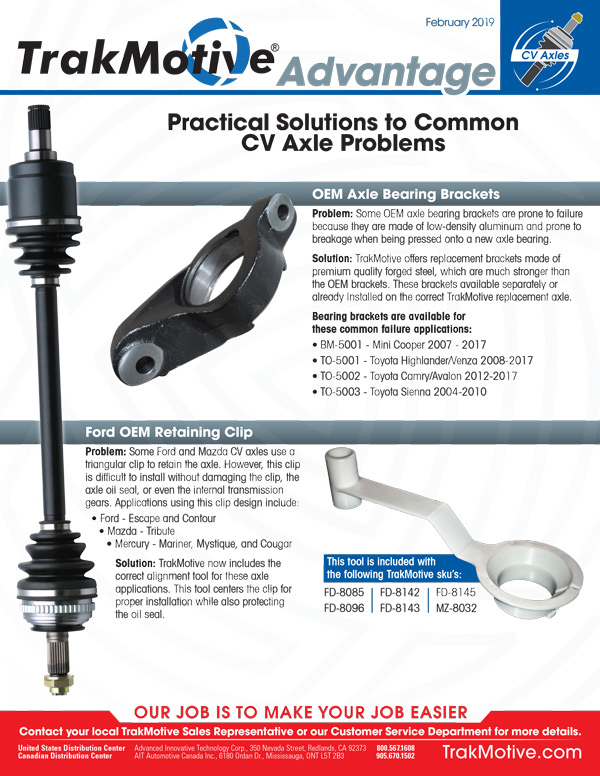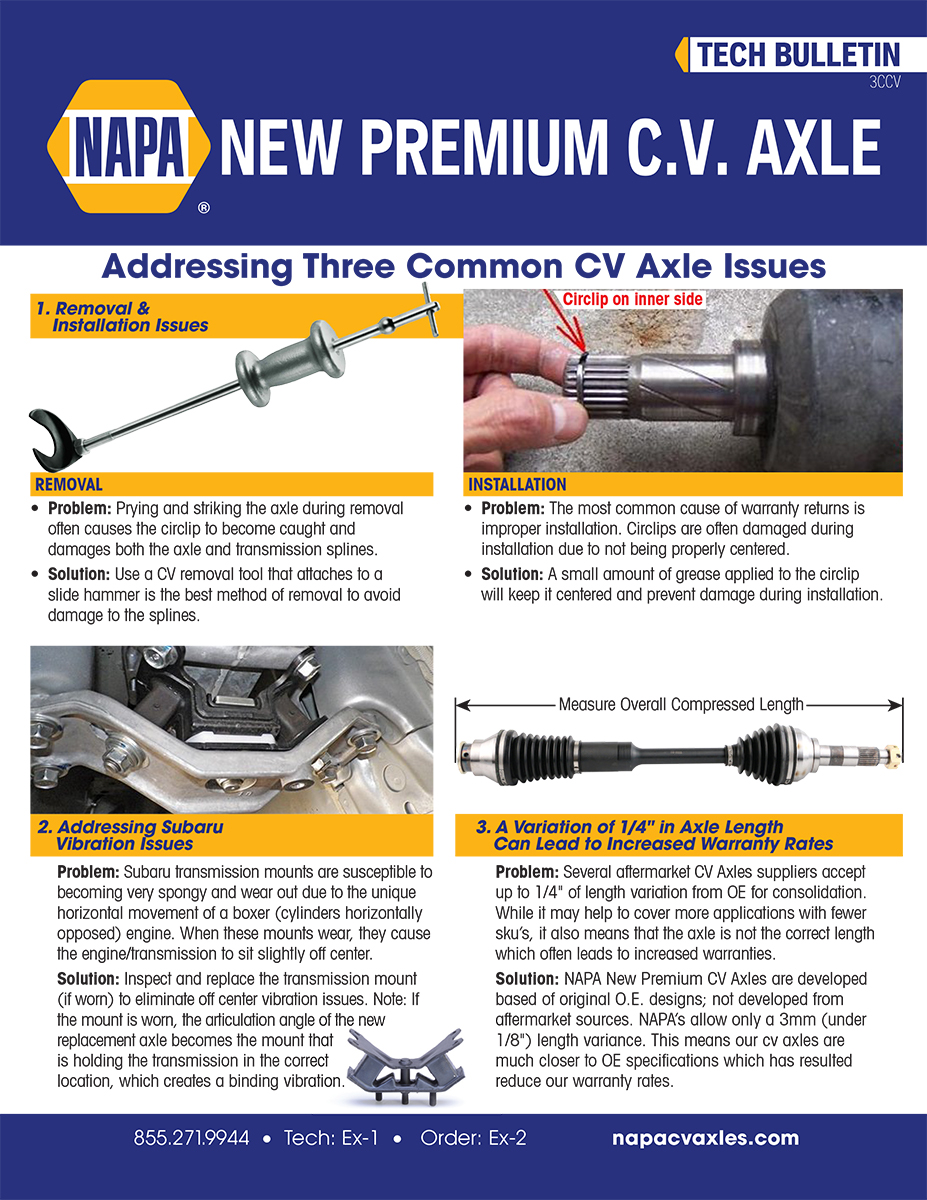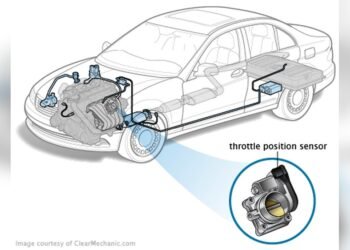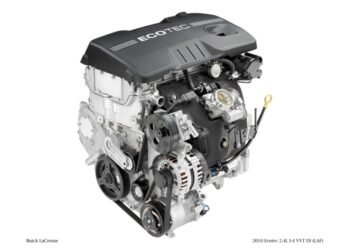CV axle issues often manifest as clicking noises during turns or vibrations while driving. These symptoms suggest potential axle wear or damage.
Maintaining your vehicle ensures its longevity and performance, and the CV (Constant Velocity) axle is a critical component that deserves attention. This part enables the transfer of power from the transmission to the wheels, allowing for smooth driving and handling.
If your car starts making unusual sounds or you feel vibrations, it might be a hint that your CV axle needs inspection. Regular troubleshooting can prevent more significant problems down the road, saving you time and money. Spotting the signs early can mean the difference between a simple repair and a costly replacement, ensuring your vehicle stays reliable on the road. Understanding the basics of CV axle maintenance is a must for any car owner, as it keeps your ride smooth and safe.

Credit: www.carrchevrolet.com
Introduction To Cv Axles
Constant Velocity (CV) axles are key to your car’s performance. They connect the wheels to the transmission. CV axles let the car drive smoothly. This section will dive into CV axles and their importance.
The Role In Vehicle Dynamics
CV axles play a crucial role in vehicle stability and handling. They adapt to road surfaces. They ensure consistent wheel speed during turns.
- Transfer power from engine to wheels
- Maintain vehicle balance
- Enable smooth turns
Anatomy Of A Cv Axle
The CV axle has several parts. Each part works together. They ensure efficient vehicle movement.
| Part | Function |
|---|---|
| Outer joint | Connects to the wheel |
| Inner joint | Links to the transmission |
| Boots | Protects the joints |
| Axle shaft | Joins inner and outer joints |
Signs Of Cv Axle Failure
Identifying CV axle issues early can save you from costly repairs. The CV axle is crucial for transferring power from your vehicle’s transmission and differential to the wheels, allowing them to drive forward. Look for these telltale signs to catch CV axle problems before they worsen.
Unusual Noises During Turns
Clicking or popping sounds when turning are classic indicators of a failing CV axle. These noises suggest that the CV joints may be worn or damaged. If you hear such sounds, inspect the CV axle immediately to prevent further damage.
Visible Grease On Tire Edges
Grease found on the edge of your tires often points to a leaking CV boot. This boot contains grease that lubricates the CV joint. When the boot tears, grease can escape and collect on the tire’s edge. A compromised CV boot can lead to CV joint failure if not addressed promptly.
Vibration While Accelerating
A telltale sign of a damaged CV axle is vibration when accelerating. This vibration may increase with the vehicle’s speed. It indicates that the CV joints may be worn, leading to an unbalanced axle shaft and uneven tire wear. Have your vehicle checked to avoid further issues.
Common Cv Axle Issues
CV axles are vital to your vehicle’s performance. They connect the wheels to the drivetrain. They let the wheels turn while delivering power. CV axles need care. Let’s explore common issues.
Wear And Tear Over Time
CV axles can wear down. Age and mileage can cause this. Signs include clicking noises when turning. Vibration during acceleration is another clue. Regular inspections prevent major damage.
Impact Damage
Sudden impacts harm CV axles. Hitting potholes hard can cause this. Off-road driving can too. Look for visible damage. Bent components mean trouble. Alignment issues may follow.
Boot Failure
The CV boot protects the axle joint. It holds grease in. It keeps dirt out. Cracks and leaks signal boot failure. Grease on the tire or under the car is bad. This needs quick action.
Check your CV axles often. Listen for noises. Feel for vibrations. Look for leaks. Early detection saves money. It keeps your ride smooth too.

Credit: www.trakmotive.com
Diy Inspection Tips
Car trouble can be daunting. Yet, some fixes are simple. CV axle issues are one. With a few DIY inspection tips, you can spot common problems. Let’s explore these checks.
Checking For Cracks And Leaks
Cracks or leaks in the CV axle signal trouble. A visual check can spot these issues. Park on a level surface. Look under the car. Check the CV axle area. Look for any grease or fluids. These could mean a cracked axle or seal.
Assessing Axle Play
Excessive axle play may indicate wear. With the car secure, grab the CV axle. Shake it. Feel for any movement. There should be little to no play. Noticeable movement suggests the need for a closer look or replacement.
Inspecting Boots And Clamps
The boots protect the CV joint. They keep grease in and dirt out. Inspect these boots. Look for tears or splits. Ensure clamps are tight and secure. Loose or damaged parts can lead to bigger issues. A simple visual check can save time and money.
Quick Fixes At Home
Troubleshooting a CV axle does not always require a pro. You can fix simple issues at home. Let’s dive into some quick fixes that can save time and money.
Grease Replenishment
CV joints need grease to stay lubricated. Without it, they wear out faster. Follow these steps to replenish grease:
- Locate the CV axle joint.
- Clean off old, dirty grease.
- Apply new, high-quality grease.
- Ensure even distribution around the joint.
Boot Replacement
A damaged boot exposes the CV joint to dirt and moisture. Replace boots with these steps:
- Remove the wheel and axle.
- Cut off the old boot and clean the area.
- Slide on the new boot and secure it.
- Refill with fresh grease.
Tightening Loose Components
Loose nuts and bolts can cause axle issues. Tighten them properly with these tips:
- Inspect all CV axle bolts and nuts.
- Use a torque wrench for correct tightness.
- Check for wear and replace if needed.
When To Seek Professional Help
Knowing when to seek professional help is key in CV axle troubleshooting. Some issues with your vehicle’s CV axle are best left to experts. Let’s explore scenarios where a professional mechanic should step in.
Severe Damage Scenarios
Spotting severe damage early can save your car from further harm. Watch out for these signs:
- Loud clicking noises during turns
- Grease on the edge of the tires
- Vibrations while driving
If you notice any, a mechanic’s expertise is crucial. They can assess and fix the damage.
Specialist Tools Required
Some repairs need special tools. Without these tools, you risk damaging your car. Here are tools professionals use:
| Tool | Use |
|---|---|
| CV Joint Puller | Removes the CV joint safely |
| Band Tool | Secures the CV boot bands |
| Torque Wrench | Ensures bolts are properly tightened |
Trying to fix without these tools may cause more issues.
Warranty Considerations
Your car’s warranty might help with repair costs. Check your warranty details. If covered, a certified shop should do the repair. Doing it yourself could void the warranty.
Preventive Maintenance Strategies
Keeping your vehicle’s CV axles in top condition is crucial. Neglect can lead to costly repairs. Preventive maintenance strategies ensure longevity and performance. Let’s explore key tactics to keep CV axles trouble-free.
Regular Inspections
Regular checks on CV axles are vital. They prevent sudden failures. Inspect for cracks, leaks, and wear. Look closely at the CV boots. They protect the axle joints. Replace them if damaged. This keeps the axles safe from debris and moisture.
Immediate Action On Early Signs
Act fast on any symptom. Clicking noises during turns are a red flag. So is a greasy wheel area. These signs hint at CV joint issues. Delay can lead to bigger problems. Fix issues early to save money and stay safe.
Quality Parts Selection
Choose high-quality parts. They ensure durability. Avoid cheap alternatives. They may fail sooner and cost more in the long run. Invest in reputable brands. Your CV axles will thank you with longer life and reliable service.

Credit: napacvaxles.com
Understanding Repair Vs. Replacement
Are you facing issues with your car’s CV axle? It’s a common dilemma: repair or replace? This crucial part of your car’s drivetrain can affect your ride’s performance and safety. Let’s dive into the aspects of repair versus replacement.
Cost-benefit Analysis
Cost plays a big role in your decision. Sometimes, a quick fix may seem cheaper. Yet, it might not be the best long-term solution. Compare the repair cost against a new CV axle’s price. Include potential future repairs in your calculation. This will give you a clear picture of which option saves money over time.
Longevity And Performance
Think about the long-term benefits. A new CV axle usually means better performance and longer service life. A repaired axle might not match the original’s durability. Assess your car’s needs to decide which option ensures a smoother and safer drive.
Compatibility And Availability
Check if the right CV axle is available for your car. The correct fit ensures optimal function. Sometimes, the right part is hard to find. In such cases, repair might be your only quick option. Always opt for quality and compatibility to avoid future issues.
Frequently Asked Questions
How Do You Diagnose A Bad Cv Axle?
To diagnose a bad CV axle, listen for clicking noises when turning, or humming during acceleration. Check for excessive play or visible damage in the axle area. Notice if the vehicle vibrates while driving, especially at high speeds. These signs indicate a possible faulty CV axle.
How Do I Know If My Cv Axle Bearing Is Bad?
To identify a bad CV axle bearing, listen for clicking noises during turns, feel for vibrations while driving, and check for grease leaks around the axle. These signs suggest the need for inspection or replacement by a professional.
What Happens When Cv Axles Go Out?
When CV axles fail, the vehicle may exhibit clicking noises during turns, vibration while driving, and potentially lose power to the wheels.
Can You Drive With A Bad Cv Axle?
Driving with a bad CV axle is not recommended. It can lead to loss of vehicle control and potentially cause an accident. It’s best to have it repaired promptly.
What Are Common Symptoms Of A Bad Cv Axle?
A bad CV axle typically manifests as clicking noises during turns, grease on the edge of the tires, or vibration while driving.
Conclusion
Navigating CV axle issues doesn’t have to be a journey taken alone. This guide has aimed to equip you with essential knowledge for identifying and addressing common problems. Remember, timely maintenance can save you from future headaches and keep your vehicle running smoothly.
Trust in your newfound understanding to make informed decisions and ensure your car’s longevity.














